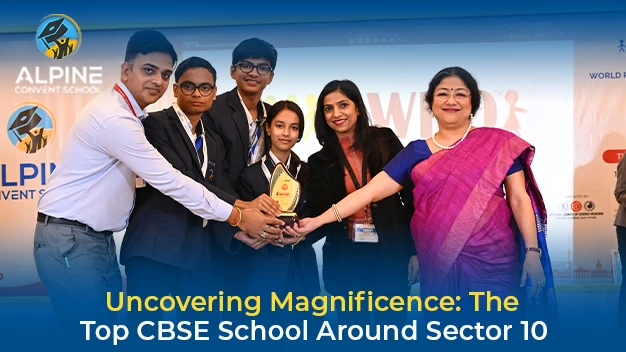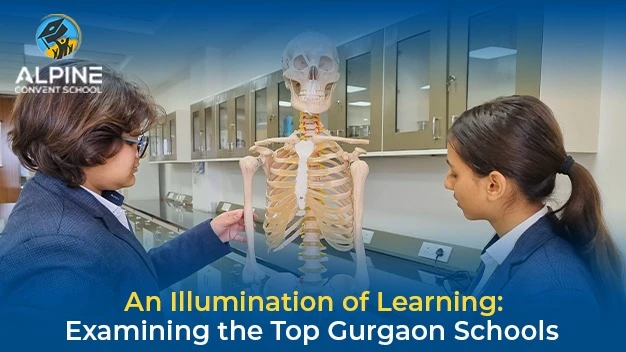
31 January, 2020
STEM has been around in the educational system since the year 2000. STEAM, on the other hand, is fairly new. Both these terms came into existence owing to the trend of the job world as schools tried their best to prepare their students to join the future workforce. STEM, as thought, was successful for some time. But soon enough, students started underperforming when their school curriculum focussed merely on science, technology, engineering and mathematics, the four pillars that constitute STEM. This concern gave rise to a modified acronym only recently that effectively took care of the loophole existing in the former. Top schools around the world started incorporating Arts (the ‘A’ of STEAM) as a crucial element of their curriculum. And consequently, both students’ performance and engagement with education rapidly improved.
During the 2000s, the world was seeing a technological boom. Dot coms started opening shop with the rise of the internet and IT became a renowned sector. Naturally, to prepare the future crop for technical jobs, schools had to adopt STEM as their primary pedagogy as students started focusing more on science, mathematics, and computer subjects. The system worked quite well in India as the country has now become an IT hub, however, technology advanced at such an unprecedented rate that STEM was no longer sufficient.
The best school in Gurgaon, recognised the changing trends. And the top ones started implementing STEAM instead of STEM. Today, humans are no longer required to perform day-to-day recurring tasks like supplying cash to customers at banks or delivering the mail by post. Instead, the need is for a workforce that can help build the programs which can further automate the existing tasks, at the core of which sits creativity. One of the vital 21st-century skills is how creative the modern batch is and how can they bring that element into science and technology. Thus came STEAM into existence and as evident, it is here to stay.
STEAM is the way forward
The current trend of the job world leaves no doubt about it. Students must engage in STEAM instead of STEM in order to find success in their professional lives. Plus, the top school in Gurgaon will always maintain Arts alongside their progressive pedagogy as such institutions agree that STEM alone has limited capacity to create space for creativity. Biologically, science and mathematics are the responsibility of the left side of the brain. Sole focus on STEM only works one side. When arts come into the mix, the right side gets work as well and the development is all-inclusive. STEAM is necessary for the overall enhancement of students. And as this element was missing initially, students started underperforming while solely focusing on STEM.
Another angle that deserves attention is the future that the modern students will step into and survive in. Smarter computer programs and artificial intelligence is bound to rule the market. The onus naturally falls on the schools to make their students AI-proof and not lose out to technological advancement. STEAM will help the current batch of students fight the inevitability. Arts gives the platform to freely imagine, create something unique, and feed creativity with curiosity. No computer, however smart, can yet copy these human traits. STEAM will make today’s students future-ready.
STEAM and its challenges
The debate is obsolete as to whether STEAM is indeed the way forward. Its vitality is currently well-known. However, schools continue to face the challenge to answers questions like when is the right time to start with STEAM and how to find skilled educators today from a crowd who has been taught in the STEM era. Only the top 10 school in gurgaon has answered these successfully as it knows that STEAM must exist from the very beginning. Pre-primary students are the most imaginative and involvement in arts must start here. As to the issue of finding the right educators, the faculty must consist of teachers of both STEM and arts backgrounds. And through constant training and discussions, the instructors can very well become adept to teach STEAM.
The Alpine Convent School was one of those few schools in Gurgaon that identified the necessity of STEAM over STEM early. The schools seamlessly made the transition as it always prioritised arts in its curriculum along with the science subjects. The arts infrastructure of Alpine is state-of-the-art. Plus, STEM subjects are taught over project-based and inquiry-based learning methods where students get their complete freedom to be creative and imaginative. STEAM must catch on. And students need to study in this pedagogy. As times change, schools must adapt as well for students never benefit from age-old conservative systems.




22 March, 2024

30 March, 2024
Get first-hand information on the top school in Gurgaon - Alpine Convent